Lab Blog
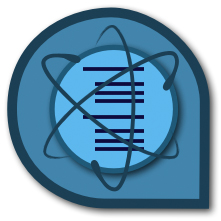 In the works |
 Analysis |
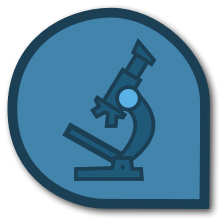 Images |
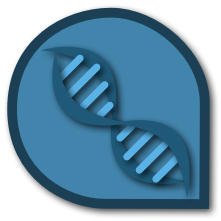 Science |
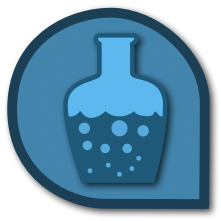 Experiments |
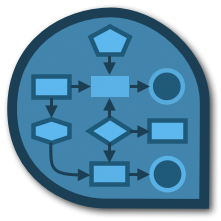 Organization |
June 15, 2017
|
On attending the ISHR 2017The meeting report here in the blog is an excerpt from articles that I published on LinkedIN. Early Career Investigator Symposium As always, the first day of the ISHR meeting featured 11 talks by Early Career Investigators (ECI) and their innovative work at the ECI symposium. At this years meeting in New Orleans, Erika Dahl from the University of Minnesota started off the ECI symposium by giving an excellent talk on Galpha-q signaling in adult cardiomyocytes. Next up was Kim Ho, from the University of Alberta, who gave intriguing insights into the role that ketone body and fatty acid oxidation plays in failing hearts. Sam Das from Johns Hopkins in Baltimore, who is also co-chairing the session then gave a fascinating talk on the functions of a micro-RNA and its effects on the mitochondrial calcium flux. 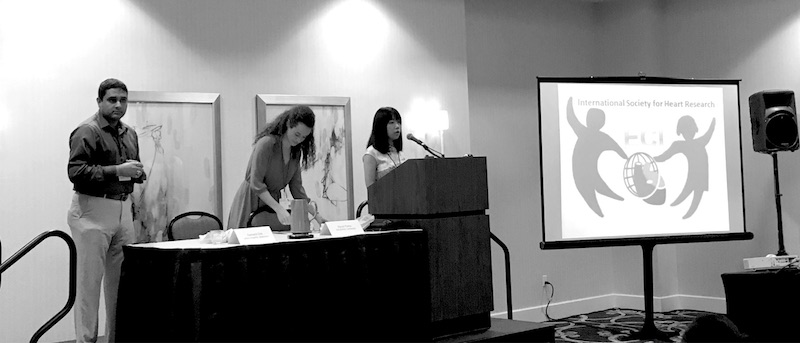 Next up was Dan Smelter from the University of Wisconsin, who presented new data on Myosin Binding Protein-C and one of its mutations associated with the development of hypertrophic cardiomyopathy. His talk was followed by a presentation by Priscilla Sato from Temple University. She showcased data on the importance of GRK2 phosphorylation at Ser670 in an in vivo mouse model. Rafael Shimkunas from the University of California Davis gave the next presentation on mechano-chemo-transduction using isolated adult cardiomyocytes cultured in gels, and measuring the dramatic effects on calcium transients. Biological roles of the Sigma1 receptor for mitochondrial functions was the topic of the next talk by Shafiul Alam from Luisiana State University. Highlights of his talk were compelling data obtained with the knockout mice, ultrastructural analysis of knockout hearts and seahorse experiments on mitochondrial functions in cardiomyocytes. His presentation was followed by a talk from Srinivas Tapa, from the University of California Davis. Srinivas presented his data on regional cardiac denervation, and effects on calcium handling influenced by beta-adrenergic stimulation. Amrita Yellamilli from the University of Minnesota gave the next presentation to showcase her data on fusion of ABCG2 expressing cells with existing cardiomyocytes. She was followed by the last two talks of the ECI symposium session, by Georgious Amanakis and Natasha Fillmore, both located at the the NIH in Bethesda. Georgious presented compelling results from mice with a C202S knock-in mutation of cyclophilin-D that affects S-nytrosilation of the protein. The fascinating talk on the role of PPARalpha in sex differences during cardiac hypertrophy by Natasha Fillmore concluded the ECI symposium. One of the highlights of the ISHR ECI sessions has always been the young investigator award (YIA) competition. The competition is split between a junior competition for graduate students and junior postdocs, and second competition for more senior postdocs and junior faculty. Participants of the young investigator award applied with an unpublished manuscript that showcases results in the cardiovascular research field. Letters from the supervisor and the applicants CV play into the decision by the ISHR YIA committee to pick an abstract for the competition. 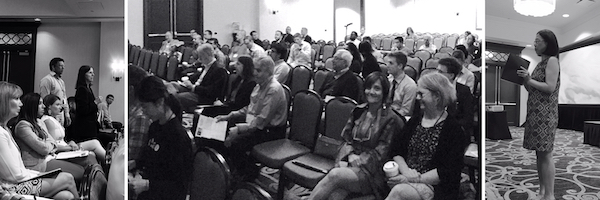 For the junior group of the YIA competition, the following early career investigators were chosen to present their data: Heaseung Sophia Chung from the lab of Jenny van Eyk at Johns Hopkins School of Medicine in Baltimore presented an intriguing study on TRPC6, and how this channel is able to ameliorate increased cardiac S-nitrosylation in Duchenne Muscular Dystrophy. The study presented by David M. Ryba from the laboratories of John Solaro and Beata Wolska at the University of Illinois in Chicago investigates cardiac effects of a small molecule FTY720, which is able to reverse diastolic dysfunction and hypertrophy in models for cardiomyopathy. Kathleen Woulfe from the laboratories of Carmen Sucharov and Brian Stauffer at the University of Colorado in Denver presented data on her project, which revolves around a cardiac mRNAseq expression profiling study of pediatric human dilated cardiomyopathy patients. Lastly, Hirad Feridooni from the laboratory of Susan Howlett at Dalhousie University in Halifax, Canada, showcased fascinating results of his study on aging and frailty on ventricular function and structure in mice. The senior group competition was kicked off by Na Li at Baylor College of Medicine in Houston. She presented intriguing data on cardiac inflammosome functions for the activation of atrial fibrillations. She was followed by Philip Bidwell from the University of Cincinnati, whose project investigates sarcoplasmic functions of HAX1 on SERCA activity. The last talk of the senior YIA group session was given by Dan Shao from the University of Washington in Seattle. Her talk revolved around how glucose is able to promote cardiac cell growth by suppressing branched-chain amino acid degradation and influencing cardiac signaling pathways. Apart from the Young Investigator Awards and the ECI Symposium, the ISHR has a lot more to offer for young and early career investigators (ECIs). The ECI luncheon provides opportunities to talk over lunch with seasoned senior investigators about finding a job as a postdoc, career development, grant writing and - of course - cardiovascular science. Postdocs, graduate students and junior faculty rotated on 7 tables - similar to a scientific 'speed-dating' - and had a chance to talk to senior principal investigators. 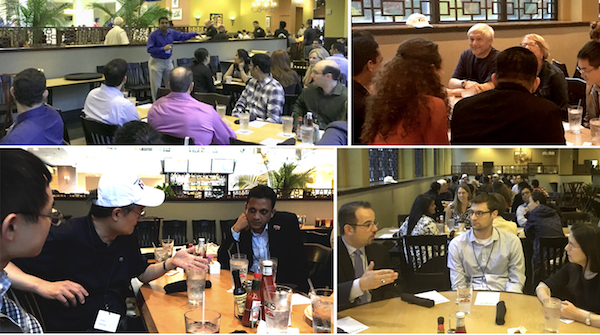 Another highlight for young and early career investigators are the career development panels. Two panels offered advice for graduate students and postdocs/junior faculty. The hourlong panels were also held on the first day of the ISHR 2017 meeting in New Orleans. The graduate student career development panel was moderated by Cat Makarewitch (UT Southwestern) and featured Edward Lau (Stanford U), Alice Kane (Dalhousie U), Randi Parks (NIH) and Phillip Bidwell (U Cincinnati). Topics covered included: How to choose a laboratory for your postdoc career? What are differences in career and networking opportunities in Canada vs. US? How to land your first grant? 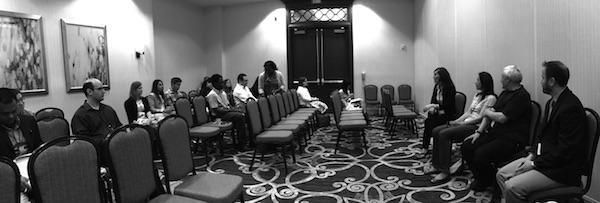 The postdoc/junior faculty career development panel was moderated by myself and featured the following panelists: Sarah Franklin (U Utah), Jeff Robbins (U Cincinnati), Rong Tian (U Washington) and Mark Kohr (Johns Hopkins). Discussed were topics that are interesting for postdocs and junior like: What grant opportunities are available, and what common mistakes to avoid when applying for a grant? How to land your first faculty position? How to negotiate your start-up? How and when to transition to industry? As always, this years ISHR conference was a great meeting, with loads of great science and networking opportunities specifically for young investigators. |
| Share this blogpost Tweet |
|
Please remember the disclaimer. |
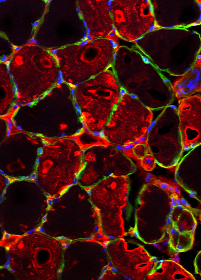
Section 'Sub' Navigation: